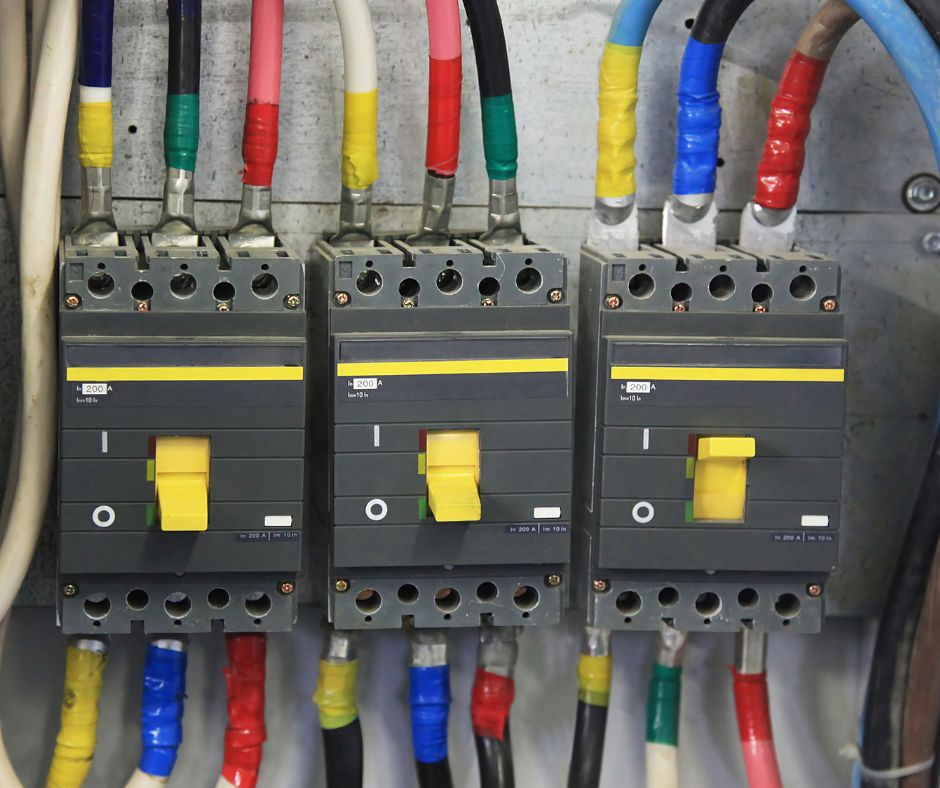Understanding the Vital Importance of Electrical Insulation Tape for Electrical Safety
Electrical insulation tape serves as a critical component for safeguarding and insulating various types of electrical wires and cables. Commonly known as insulating tape, this indispensable tool is vital for ensuring safety in both professional and residential settings. It effectively prevents electrical shorts, providing protection against moisture, dust, and abrasion, all of which can jeopardize the integrity and functionality of electrical systems. Acknowledging the importance of this tape not only helps you avert potential hazards but also promotes a well-organized workspace that enhances overall safety practices.
Electrical insulation tape is offered in various sizes, lengths, and colors, each tailored for specific applications. These diverse options not only enhance insulation performance but also aid in the identification and organization of cables through effective color-coding strategies. By employing different colors, you can simplify your electrical tasks, facilitating the quick recognition of particular wires. This practice significantly boosts productivity and organization during electrical projects, ensuring a smoother workflow and reducing the likelihood of errors.

Recognizing the Conditions That Indicate Electrical Tape Melting
Indeed, electrical tape is susceptible to melting under specific conditions that demand careful monitoring. This article delves into the temperature thresholds relevant to electrical tape, outlines the scenarios that may lead to melting, and highlights critical signs of overheating that require close attention. Understanding these factors is essential for ensuring the safe and effective use of electrical insulation tape across a multitude of applications, thereby protecting both property and personal safety.
Exploring Temperature Limits of Electrical Tape for Optimal Usage
Like many materials, electrical tape has defined temperature limits that are crucial for ensuring safe usage. Most standard electrical tape can endure temperatures of up to approximately 80°C, while some heavy-duty variants are specifically engineered to withstand slightly higher temperatures. When exposed to conditions that exceed these thresholds, the tape's integrity begins to deteriorate, leading to potential failures that compromise safety. Understanding these limits is essential for maintaining effective insulation and minimizing risks in electrical applications.
As temperatures rise and approach their maximum limits, the performance of electrical tape may start to falter. This degradation can present itself in various forms, including melting, a sticky or gooey texture, or, in extreme cases, total tape failure. Being aware of these temperature limits is crucial for maintaining safety and effectiveness in electrical applications. By doing so, you can ensure that your projects are executed without unnecessary risks or complications that could jeopardize safety and functionality.
For environments that regularly experience extreme temperatures, it is advisable to opt for high-temperature variants of electrical tape. For example, heat-resistant tape, crafted from materials such as fiberglass or silicone, can tolerate temperatures of up to 200°C or even higher. This makes it an excellent choice for applications exposed to significant heat, thereby ensuring safety and reliability.
Also Read: Keep Your Pets Safe Around Electricity
Request Your Quote Today!
Inquire About Our FREE Electrical Inspections

Identifying the Primary Factors Contributing to Electrical Tape Melting
Electrical tape melting can occur due to several underlying factors, primarily resulting from exposure to excessive heat. Recognizing these causes is essential for ensuring safe and efficient usage. Below are some of the most common reasons that lead to the melting of electrical tape:
Analyzing the Effects of Excessive Heat on Electrical Tape
The primary reason for electrical tape melting is its exposure to high temperatures. If the tape is situated near hot surfaces, engines, or any components that generate heat, it may start to soften, bubble, or even completely melt. Additionally, electrical systems such as power circuits can produce heat levels that exceed the tape's rated capacity, especially during operational malfunctions or overload scenarios. Recognizing these conditions is crucial for using electrical tape safely and effectively.
Thus, when utilizing electrical tape in environments prone to high temperatures, it is prudent to review the temperature ratings of the tape. This ensures you prevent potential failures, thereby maintaining safety during application and safeguarding both equipment and personnel.
Evaluating Environmental Factors That Degrade Electrical Tape Performance
Electrical tape is not designed for indefinite durability. Over time, both the adhesive and the tape material can degrade, particularly when exposed to ultraviolet (UV) light, moisture, or other harsh environmental conditions. Such degradation can significantly diminish the insulating capabilities of the tape. As the tape ages, it becomes increasingly vulnerable to melting, even at temperatures that would typically be manageable under normal conditions. Regular maintenance and inspection are vital to ensure continued effectiveness.
Routine wear and tear are expected in the lifecycle of electrical tape. Therefore, conducting regular inspections for any signs of aging or damage is essential to guarantee safety and effective performance. This proactive approach helps in identifying potential issues before they escalate into significant safety hazards.
Understanding the Risks Associated with Improper Application of Electrical Tape
Applying electrical tape under inappropriate conditions can lead to premature failure. For example, if the tape is wrapped too tightly, subjected to friction or elevated temperatures, or overstretched during application, its overall performance may be compromised. Moreover, wrapping the tape around sharp edges or applying it to components prone to overheating, such as light bulbs or electrical outlets, can lead to issues unless the tape is specifically rated for those applications.
Also Read: 10 Ways to Save On Power And Energy Costs
Recognizing the Warning Signs of Overheated Electrical Tape
If you suspect that your electrical tape is overheating, several key indicators should be closely monitored. Here are the most common signs that may suggest your tape is melting or experiencing excessive heat:
Detecting a Sticky or Tacky Texture in Overheated Electrical Tape
A noticeable change in texture, particularly a sticky or tacky feel, often serves as one of the first indicators of melting electrical tape. This alteration can act as an early warning sign of further degradation, indicating that the tape may no longer provide adequate insulation. Promptly addressing this issue can help prevent further damage and maintain safety.
Identifying Discoloration as a Clear Sign of Heat Damage
Overheated electrical tape may exhibit significant discoloration. You might observe a change from its standard black or colored appearance to shades of brown, dark gray, or even black. This transformation occurs as heat causes the tape's PVC or other materials to break down. Early detection of this issue can avert additional damage to your wires. If left unaddressed, it may lead to melting or even create severe fire hazards.
Observing Bubbling or Distortion as Signs of Excessive Heat
If electrical tape begins to bubble, distort, or warp, it indicates that heat is adversely affecting its structural integrity. This typically occurs when heat causes the adhesive or plastic layers to separate or degrade. The surface may become wavy or uneven, signaling that temperatures have surpassed safe levels. Upon noticing these bubbles, it is advisable to consult your electrician for a thorough evaluation to ensure safety.
Recognizing a Burning Smell as a Critical Warning
A burning smell near electrical tape is a serious warning sign that should never be overlooked. This odor may resemble melting plastic or burning rubber. When excessive heat causes the adhesive to break down, the resulting fumes can be alarming. Do not dismiss this warning. If you detect a burning smell, it could indicate that the tape is on the verge of melting or potentially catching fire, necessitating immediate action.
Visible Smoke as an Urgent Indicator of Danger
If you notice smoke emanating from the electrical tape, it is a clear indication that heat levels have drastically exceeded the tape's capacity. Smoke is a strong signal that the tape has likely started to melt or may even be igniting. At this critical moment, it is essential to turn off the power source immediately and seek assistance from your electrician to prevent potential hazards.
Remember – Never use water to extinguish an electrical fire. Instead, utilize a CO2 fire extinguisher for safety.
Immediate Actions to Take if Electrical Tape Melts: A Safety Protocol
In the event that your electrical tape melts, the first step is to disconnect any power sources or switch off any equipment to ensure safety.
Prioritizing safety is crucial, as electrical hazards can pose significant risks to both life and property. Taking immediate action can mitigate further risks.
Once you have ensured that the area is safe, always consult your electrician for professional guidance. If a professional installed the tape, they may need to inspect the area for any underlying electrical issues that could have contributed to the problem, ensuring comprehensive safety and functionality in your electrical systems.
Evaluating Alternatives to Electrical Tape for High-Temperature Applications
If you frequently operate in environments where temperatures exceed the limits of standard electrical tape, it is wise to consult your electrician regarding suitable alternatives. Here are several options worth considering:
- Heat-resistant silicone tape: This particular type of tape is designed to endure elevated temperatures and is ideal for applications where heat represents a significant concern.
- Fiberglass tape: A robust option that can withstand extreme temperatures without compromising performance or safety.
- Mica or ceramic insulation: For the highest level of heat protection, specialized insulations such as mica or ceramic serve as excellent choices, providing superior safety in high-temperature environments.
Important Considerations Regarding the Risks of Melting Electrical Tape
In summary, electrical tape can indeed melt, primarily due to exposure to excessive heat. Understanding the temperature limits of your tape and ensuring you select the appropriate type for your specific application are crucial steps in preventing potential issues. By remaining vigilant about signs such as discoloration, stickiness, or unusual smells, you can take swift action to mitigate risks.
Always prioritize safety and do not hesitate to reach out to your local electrician for expert advice when needed. Proper understanding and proactive measures can significantly enhance safety and functionality in your electrical projects.
Request Your Quote Today!
Inquire About Our FREE Electrical Inspections

The Article: Does Electrical Tape Melt? Here’s What You Need to Know first appeared on https://writebuff.com
The Article Electrical Tape Melting: Essential Facts You Should Know Was Found On https://limitsofstrategy.com
The Article Electrical Tape Melting: Key Facts You Need to Know First Appeared ON
: https://ad4sc.com














